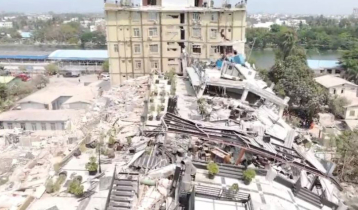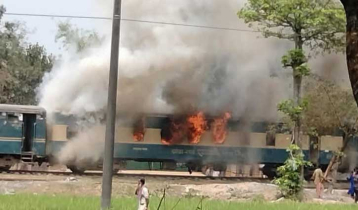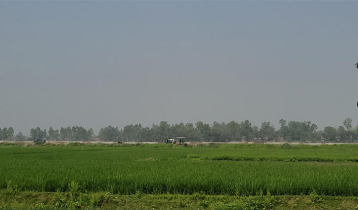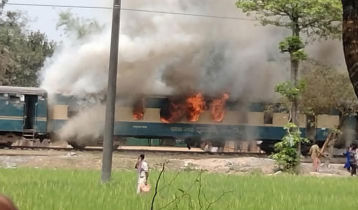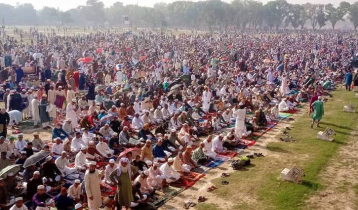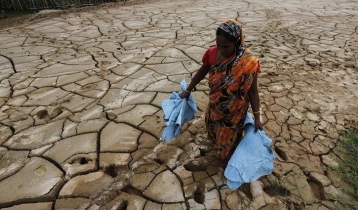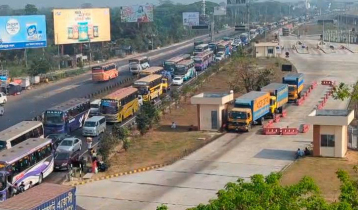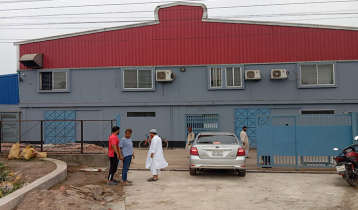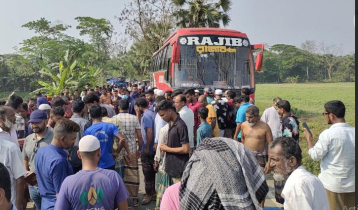Loss and Damage, a growing concern for South Asia
Hasan Mahmud || risingbd.com
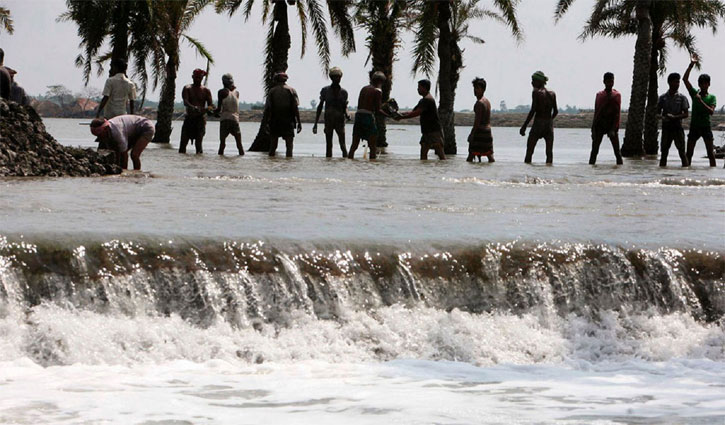
Experts fear 710 kilometers of coastline could be submerged by 2030. (File photo)
South Asian countries including Bangladesh face immense and irreversible losses because of climate change. But support from developed countries is lacking. Loss and damage, with progress being minimal amidst fluctuating interests. The wealthy world has created the climate crisis, while the poorer nations, which emit very little carbon, are suffering the most.
Addressing climate change requires financing, yet as the UN climate summit COP29 approaches, there is still no sign of funding. Progress has been limited at the event held in Baku, Azerbaijan. Climate experts have called on countries to take swift, effective, and collective action.
All negotiations at the climate conference seem to be stuck on the issue of financing. Despite much talk about money, the tangible outcomes are minimal. While affected nations strive to bring about change, they are met with resistance. As a result, environmental activists expressed their frustration throughout the day in Baku. Many placards during the protests echoed the term ‘greenwash’ which means misleading people by concealing the truth. Environmentalists lack confidence in the grand promises made by leaders from various countries to reduce global temperatures during discussions at the conference. Representatives from affected countries, including Bangladesh, have openly voiced in various forums and press conferences that developed nations are failing to fulfill their commitments. They argue that a handful of wealthy countries, having recklessly burned coal, oil, and gas for years, have pushed the rest of the world into danger, only to now stall on compensation. Many are skeptical about the intentions behind wealthy nations' efforts to involve private capital in financing measures to combat climate change.
At the last 29 climate conferences, affected countries have demanded $100 billion annually, yet global leaders have repeatedly broken their promises. Many argue that these are developed countries, but what kind of development are we talking about? They are major polluters, historically responsible for severe carbon emissions. They are obligated to provide this compensation to help save the planet. However, this funding or financing must not be conditional in any way, nor should it involve loans or contracts. It cannot be used to impose carbon credits, new hazardous technologies, or seeds. This fund must be secured to support the climate adaptation efforts of Bangladesh's rural population, which depend on local and diverse approaches, as well as to compensate for overall damage.
What constitutes loss and damage resulting from climate change?
The consequences of climate change manifest as increasingly frequent and severe floods, heatwaves, storms, and rising sea levels. While some individuals can adapt to these environmental changes, there are numerous situations where adaptation is not feasible: lives are lost, protective barriers are breached, land becomes unproductive, habitats undergo irreversible changes, and livestock perish. The unavoidable social and economic repercussions of climate change are termed "loss and damage."
Loss and damage can be categorized into economic and non-economic types. Economic losses encompass financial detriments experienced by businesses, such as the significant heatwaves in India that have led to decreased wheat yields, adversely impacting the livelihoods of numerous farmers. This category also includes the destruction of property and infrastructure, exemplified by homes being swept away in increasingly severe floods.
Non-economic loss and damage may involve the tragic loss of lives, as well as the erosion of cultural traditions, indigenous knowledge, biodiversity, and essential ecosystem services.
What is the impact of loss and damage on Bangladesh and South Asia?
From 2019 to 2023, approximately 82.1 million individuals were affected by weather-related disasters in South Asia, as reported by the Centre for Research on the Epidemiology of Disasters. In 2022, South Asia accounted for the majority of natural disaster-related fatalities in Asia, largely due to the "unprecedented" floods in Pakistan that year, which impacted an estimated 33 million people.
Numerous reports from the Intergovernmental Panel on Climate Change (IPCC) have highlighted South Asia's heightened vulnerability to extreme weather events.
As global temperatures rise, the frequency and intensity of such disasters are expected to increase, potentially leading to significant loss and damage for the South Asian region.
Considering the significant economic and humanitarian consequences of these changes, the methods by which the world assesses and compensates for loss and damage are critically important for the future of South Asia and all developing nations. With lives and livelihoods on the line, countries in this region and beyond are advocating for meaningful global discussions on loss and damage to facilitate their recovery and prepare for future challenges.
What level of loss and damage will South Asia endure due to climate change? A study published in Nature in April 2024 projected that South Asia could face a median income reduction of 22% by 2050 as a result of climate change effects. Additionally, a 2018 study conducted by Australia’s Crawford School of Public Policy estimated that a 3°C increase in global temperatures above pre-industrial levels could lead to a 2.1% decline in India’s GDP by 2037, escalating to 5.5% by 2067.
As of 2022, nearly 65% of South Asians resided in rural areas reliant on agriculture, which constitutes 18% of the region's gross domestic product (GDP) and accounts for 42% of total employment. However, agriculture is significantly impacted by climate change, affecting crop yields, exacerbating market prices, and heightening regional food insecurity.
A pivotal 2022 IPCC report on climate impacts highlighted those economic losses from floods, cyclones, and heatwaves, along with gradual crises such as diminishing agricultural productivity, would have a profound effect on South Asia.
It is important to note that South Asia is already incurring substantial costs due to extreme weather events. A study by the NGO Germanwatch ranked India as the seventh most affected country by extreme weather in 2019, reporting that severe floods that year resulted in approximately USD 10 billion in damages, claiming 1,800 lives and displacing around 1.8 million individuals.
Each year, Bangladesh and other South Asian nations also endure significant destruction from tropical cyclones. Although advancements in weather forecasting have considerably decreased the loss of life, homes and livelihoods are consistently devastated with each storm.
Super cyclone Amphan, which struck India and Bangladesh in 2020, resulted in estimated losses of around USD 14 billion, displacing 2.4 million individuals in India and 2.5 million in Bangladesh. Four years later, cyclone Remal impacted the same area, leading to damages estimated at approximately USD 600 million, affecting sectors such as fisheries, housing, and infrastructure.
As climate change progresses, such extreme weather events are expected to become increasingly severe and unpredictable, complicating the ability of meteorologists to provide timely warnings as storms form.
A 2019 study, using 2005 price levels, projected that climate change-related loss and damage could cost South Asia USD 518 billion by 2050, with estimates potentially rising to USD 997 billion by 2070.
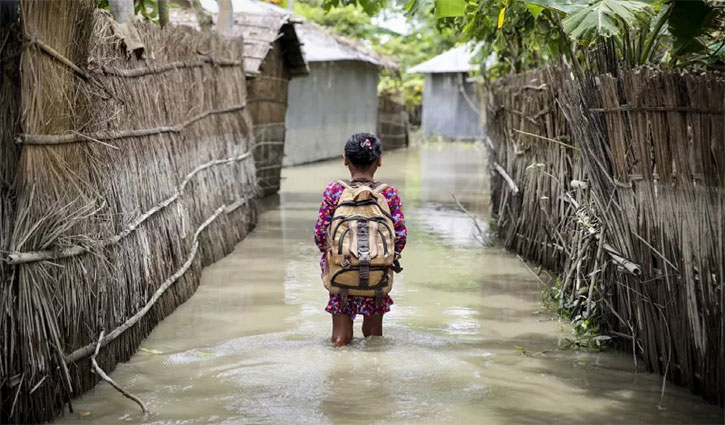
Climate change threatens lives and futures of over 19 million children in Bangladesh. Photo Source Unicef
Why is loss and damage a contentious topic?
Loss and damage have emerged as a divisive issue in international climate discussions, primarily due to concerns regarding liability and compensation. Developed nations, which have historically contributed the most to greenhouse gas emissions since the industrial revolution, have been hesitant to agree to any international framework that could obligate them to compensate for the losses and damages caused by their emissions.
In principle, such an agreement was established in 2023 during the UN’s annual climate change COP (Conference of the Parties to the UN Framework Convention on Climate Change). Held in Dubai, COP28 saw the establishment and funding of a loss and damage fund. However, the initial financial commitments represented less than 0.2% of the total annual losses faced by developing countries.
What does the Paris Agreement state regarding loss and damage?
Article 8 of the Paris Agreement, which was signed in 2015 at COP21, addresses loss and damage. It emphasizes that the countries that are parties to the agreement acknowledge “the importance of averting, minimizing, and addressing loss and damage associated with the adverse effects of climate change,” and they are encouraged to enhance collaboration in implementing effective solutions.
The incorporation of specific language regarding loss and damage in the Paris Agreement provided a formal acknowledgment that developing nations had advocated for; however, the manner in which it was articulated favored the interests of developed countries. Paragraph 52 of the decision accompanying the Paris Agreement clearly states: “Article 8 of the Agreement does not involve or provide a basis for any liability or compensation.”
Consequently, the Paris Agreement does not impose any legally binding responsibilities on nations to tackle loss and damage related to climate change, nor does it specify any financial obligations to assist countries experiencing significant loss and damage.
What is the extent of funding allocated for loss and damage?
As the United Nations gradually works towards establishing a sufficient loss and damage fund, some independent initiatives have emerged to aid vulnerable nations. In 2021, a coalition of philanthropic organizations, spearheaded by the Children’s Investment Fund Foundation, contributed USD 3 million towards a loss and damage finance facility. Additionally, during COP26 that same year, the Wallonia region of Belgium committed EUR 1 million (approximately USD 1.1 million), while Scotland, the host nation, pledged GBP 2 million (around USD 2.6 million).
Nevertheless, these contributions are minimal compared to the projected financial needs. The 2019 publication, Loss and Damage from Climate Change, estimates that developing countries will require between USD 290 billion and USD 580 billion annually by 2030 to address loss and damage. This estimate, co-edited by the International Institute for Applied Systems Analysis in Austria and the London School of Economics, is based on 2005 price levels and reflects a broad range due to various potential emissions-reduction scenarios.
Is the establishment of a sufficient loss and damage fund feasible?
At COP28 in Dubai, developed nations pledged approximately USD 700 million towards the new loss and damage fund. This commitment included contributions from the United Arab Emirates, Germany, Italy, France, Japan, Canada, Denmark, Ireland, Slovenia, the European Union, and the United States.
This amount represents less than 1% of the projected USD 400 billion that developing nations need annually to address the losses and damages resulting from climate change.
In light of this inadequate advancement, specialists from the Global South have started advocating for greater ambition through the New Collective Quantified Goal. Should this initiative gain traction in upcoming climate change conferences and negotiations, it has the potential to deliver a minimum of USD 1 trillion each year to developing countries, offered as grants and concessional financing.
Looking forward to COP 30
The Government of Brazil will host the thirtieth Conference of the Parties of the UNFCCC (COP 30), with a view to building on previous successes and paving the way for future ambition to effectively tackle the global challenge of climate change. COP30 will take place in Belém, Brazil, from 10-21 November this year, with the themes include: reducing greenhouse gas emissions. adaptation to climate change. climate finance for developing countries.
To ensure that fund can effectively respond to the needs of people and communities affected by climate change, all countries must work together. At the COP-29 conference, important discussions took placed on how to provide financial assistance through various innovative methods, including bonds and insurance. The G7 countries, known as the Global Shield, also discussed pre-planned insurance and other financial support for low-income countries affected by climate disasters such as floods, droughts, and hurricanes.
Additionally, there have been suggestions in recent conferences to divert attention from the true 'loss and damage' fund to some grants. Most representatives from poorer countries have expressed a desire for grants, not loans or insurance, as these could further increase the debt burden on countries in South and Southeast Asia. Moreover, the pledges made by wealthy nations are not sufficient.
Some countries alone require several trillion dollars in assistance to address the damage caused by climate change. Neither wealthy countries nor international financial management can adequately solve these challenges.
Naturally, the affected countries are looking ahead to COP-30. They will seek resolutions on the unfinished issues from recent conferences and assurances for funding from developing countries, including those in South Asia.
Experts Opinion
Md. Shamsuddoha from Bangladesh's climate research organization (CPRD) states that Western countries now plan to profit from climate change. This development worker notes that they have significant surplus capital and are looking to invest in poorer nations under the guise of carbon trading. There is a growing suspicion that a form of carbon capitalism is beginning to take shape.
Environmental activist Syeda Rizwana Hasan, who is currently serving as Environment, Forest and Climate Change Adviser to the interim government of Bangladesh, stated that it is not possible to wait until 2030 to take effective action against climate change. Advocating for justice for those affected by climate change, she emphasized that developed countries must urgently reduce emissions to meet the 1.5 degrees Celsius target and fulfill their commitments under the Paris Agreement. She also highlighted how Bangladesh, as a climate-vulnerable country, is confronting the realities of climate change every day, underscoring the need for coordinated global initiatives.
Syeda Rizwana Hasan noted that in 2024, two devastating floods caused $1.7 billion in damages in Bangladesh, equivalent to 1.8 percent of the national budget. Over the past 18 months, Bangladesh has been affected by 15 climate-related natural disasters, displacing 1.2 million people. Despite contributing only 0.4 percent to global greenhouse gas emissions, the country suffers extreme losses.
She further stated that Bangladesh has set a target to reduce emissions by 22 percent by 2030, which includes an unconditional reduction of 27 million tons and a conditional reduction of 61 million tons. Achieving these targets will require $45 billion in domestic funding and $135 billion in international assistance. Developed countries need to strengthen their nationally determined contributions (NDCs) based on climate justice, reduce reliance on market mechanisms, and uphold their commitments to high-quality climate financing.
Dhaka/Hasan/Nasim










